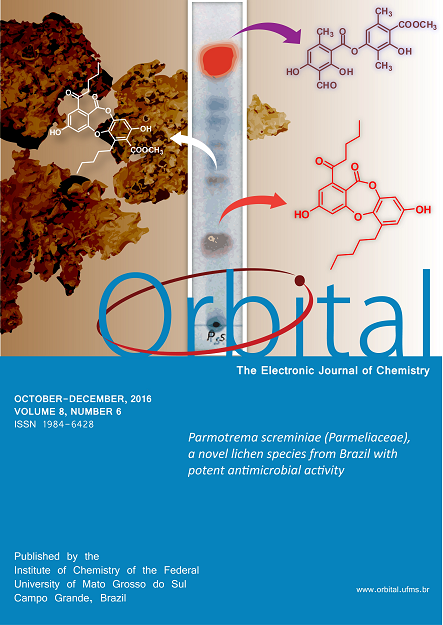Evaluation of the Components Released by Wine Yeast Strains on Protein Haze Formation in White Wine
- β-glucanases,
- β-glucosidases,
- indigenous yeast strains,
- protein haze formation,
- mannoproteins
- wine ...More
Copyright (c) 2016 Orbital: The Electronic Journal of Chemistry

This work is licensed under a Creative Commons Attribution-NonCommercial-NoDerivatives 4.0 International License.
Abstract
Cultures of 23 indigenous yeast strains (22 Saccharomyces cerevisiae and a non-Saccharomyces, Torulaspora delbrueckii), isolated from fermentation tanks at wineries in Castilla-La Mancha (Spain), and were performed under winemaking conditions using a synthetic must. Polysaccharide analysis and turbidity assays were conducted so as to observe the capacity of the released mannoproteins against protein haze formation in white wine, and 3 strains (2 Saccharomyces cerevisiae and T. delbrueckii) were chosen for further experiments. The action of a commercial b-glucanolytic enzyme preparation (Lallzyme BETA®), and a β-(1→3)-glucanase preparation from Trichoderma harzianum Rifai were evaluated to release polysaccharides from the different yeast strains’ cell walls. Protection against protein haze formation was strain dependent, and only two strains (Sc2 and Sc4) presented >50% stabilization in comparison to controls. Addition of β-glucanases did not increase the concentrations of polysaccharides in the fermentation musts; however, a significant increase of polymeric mannose (mannoproteins) was detected using an enzymatic assay following total acid hydrolysis of the soluble polysaccharides. Enzymatic treatment presented positive effects and decreased protein haze formation in white wine.





